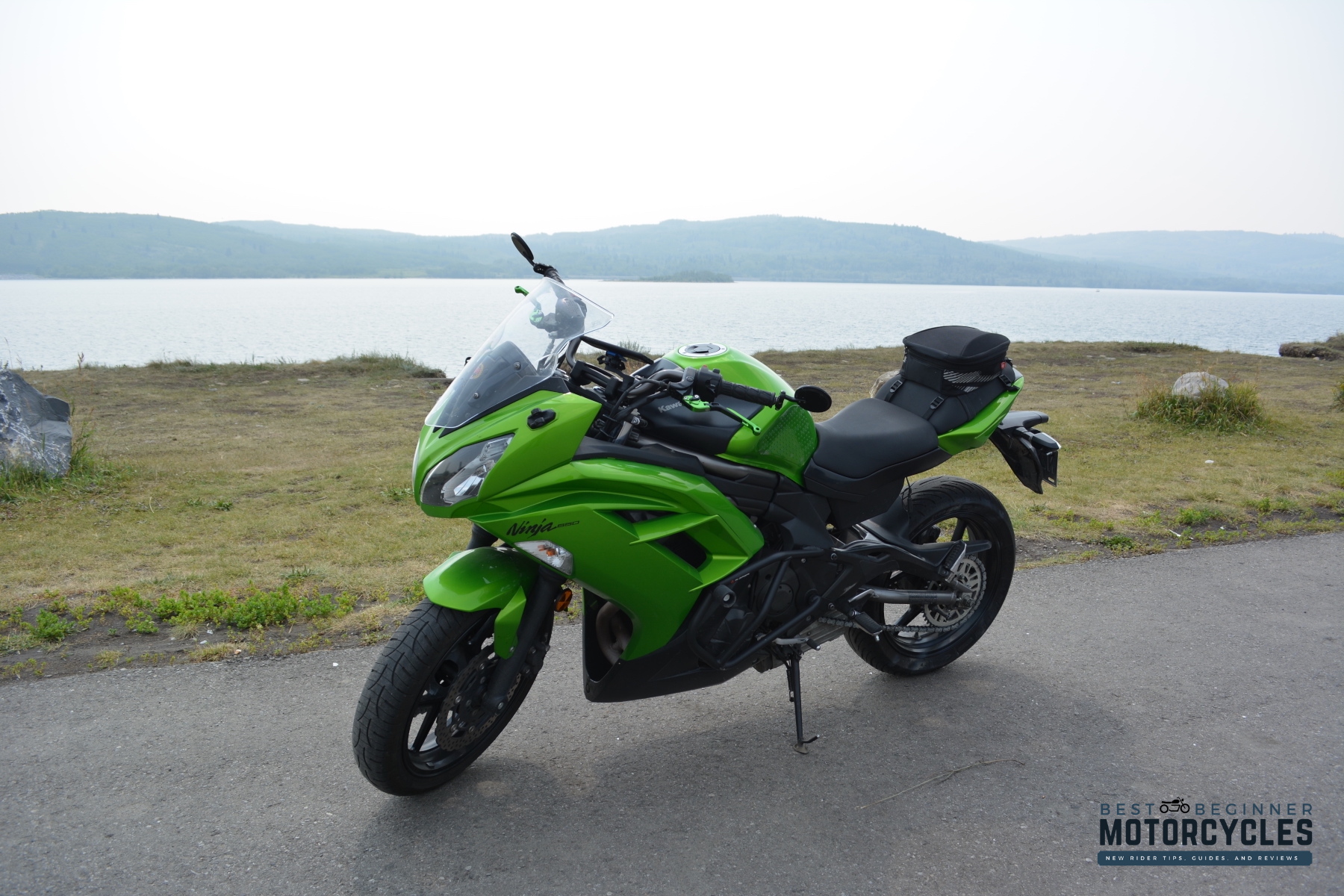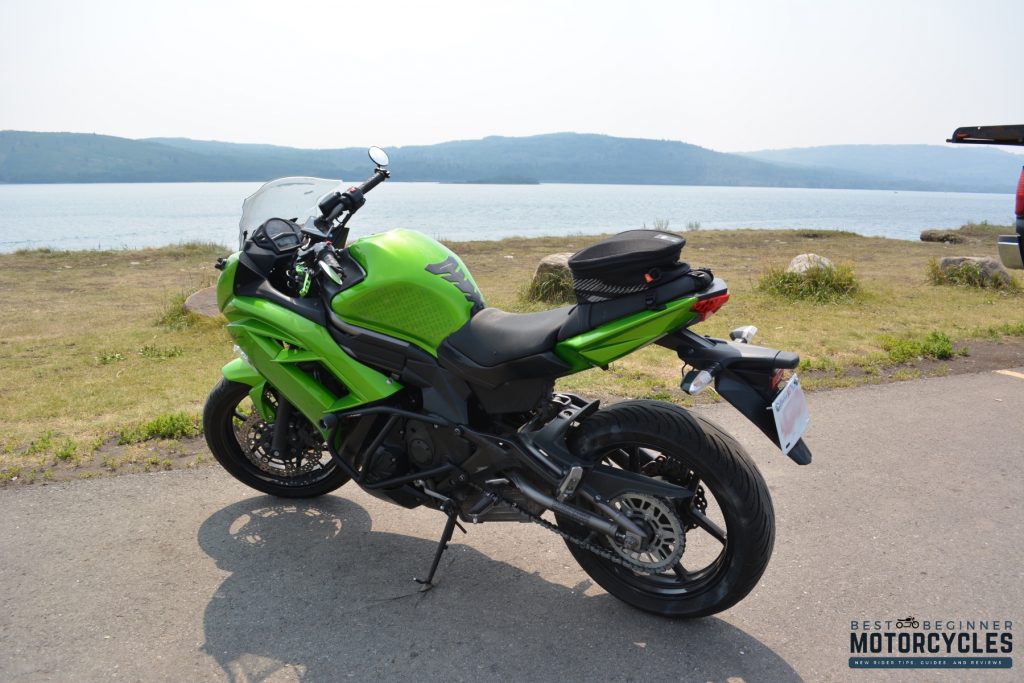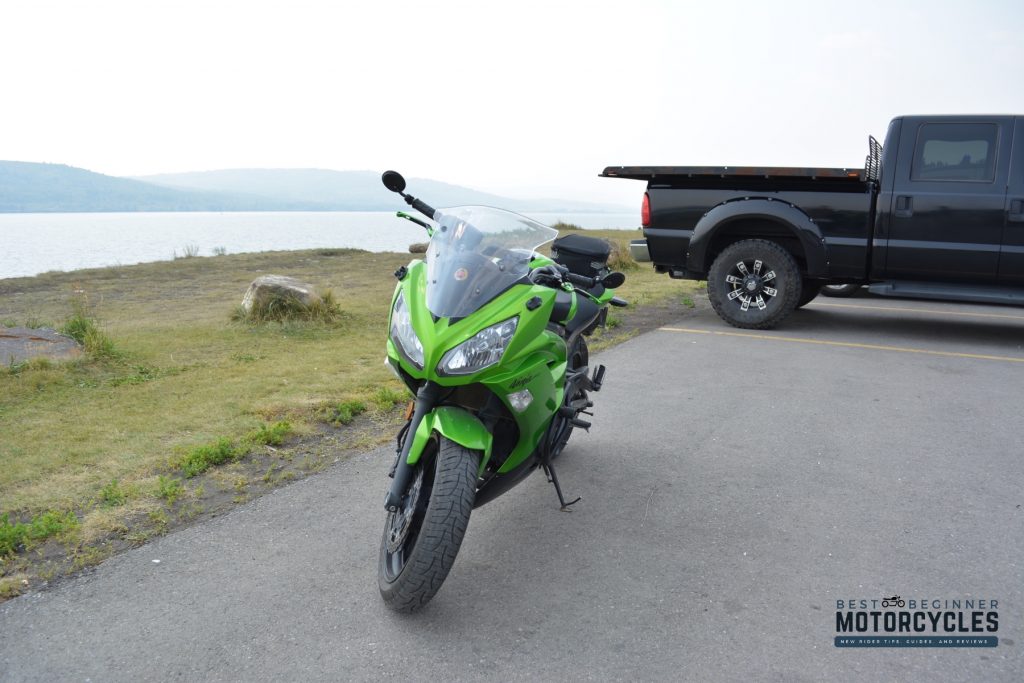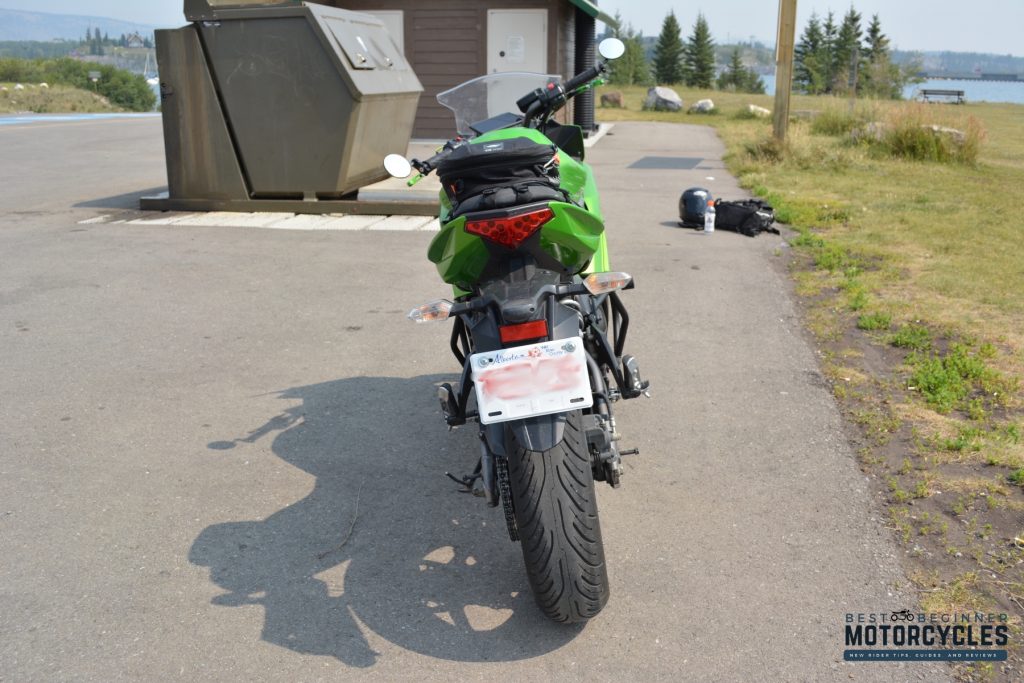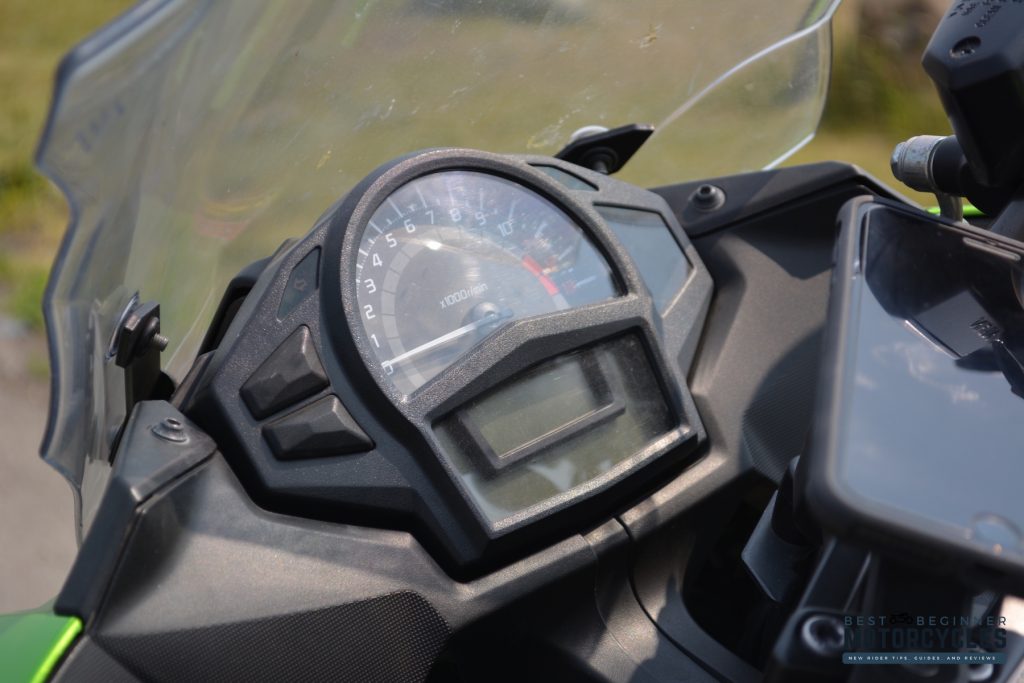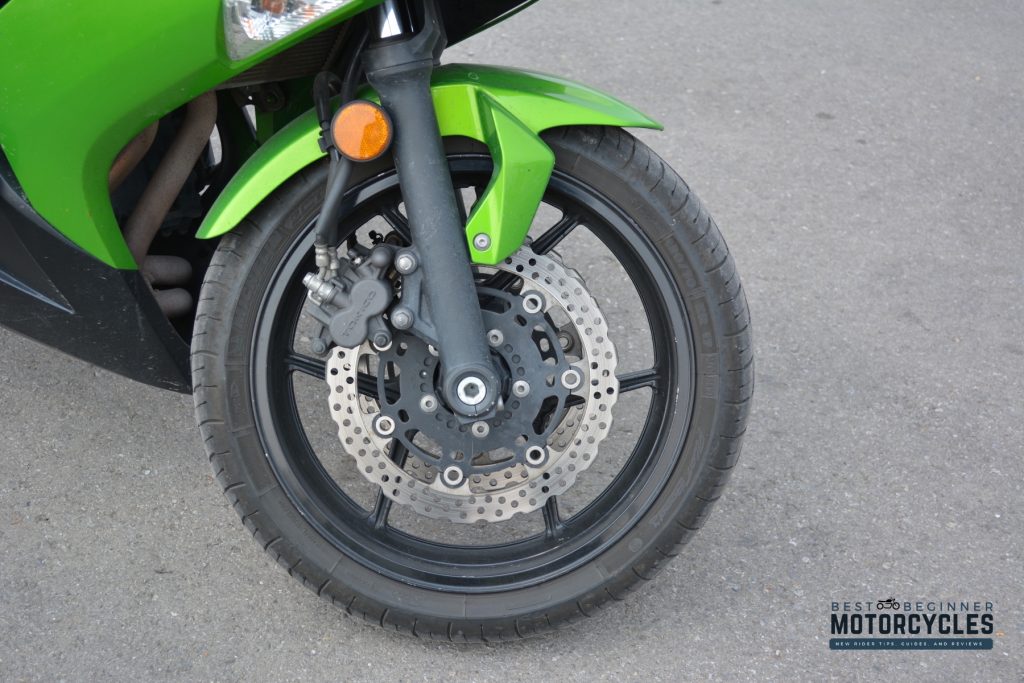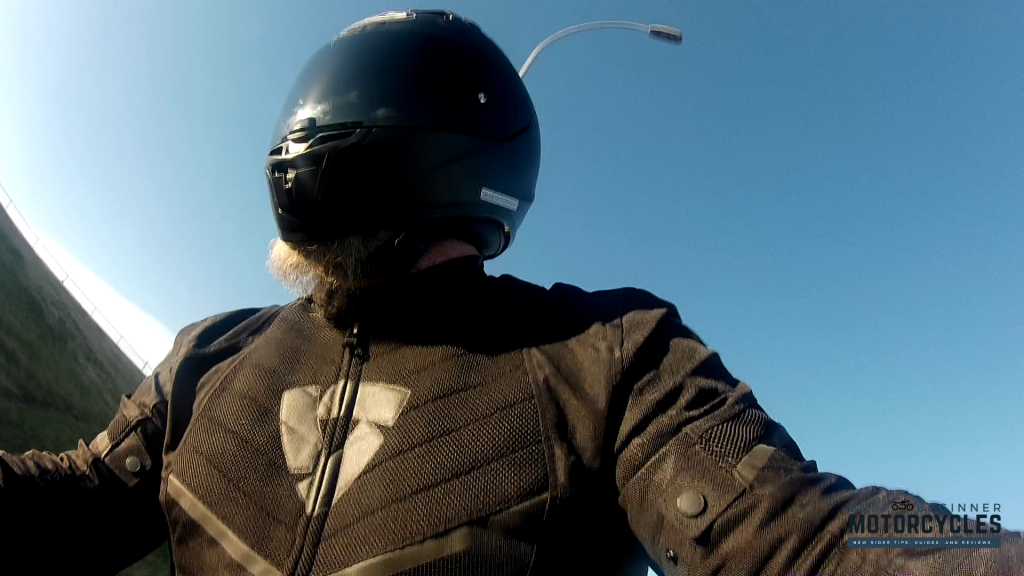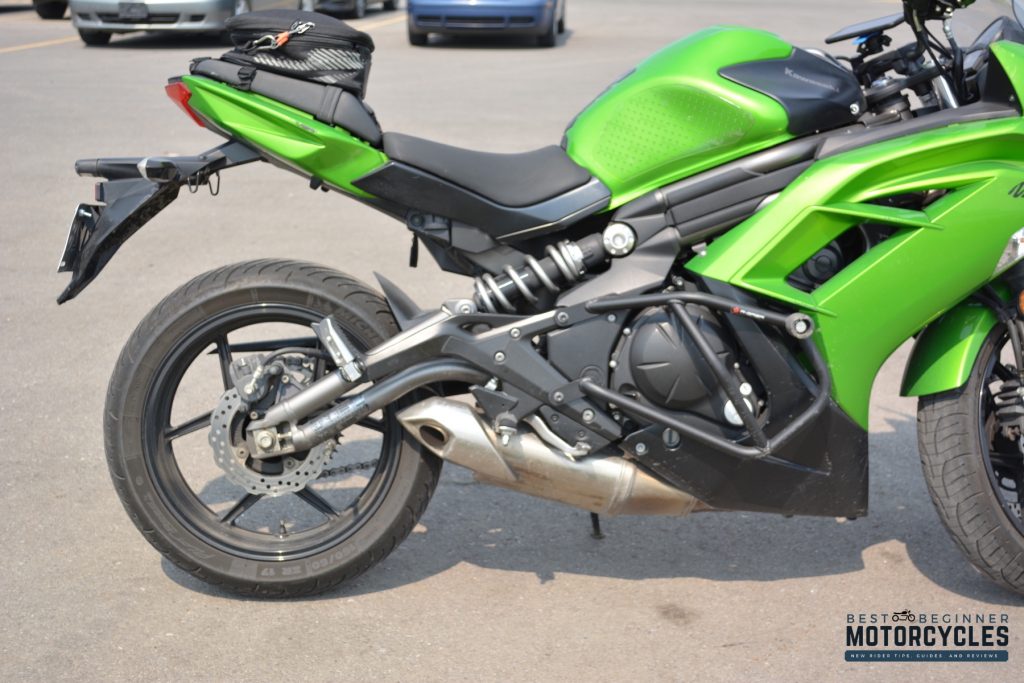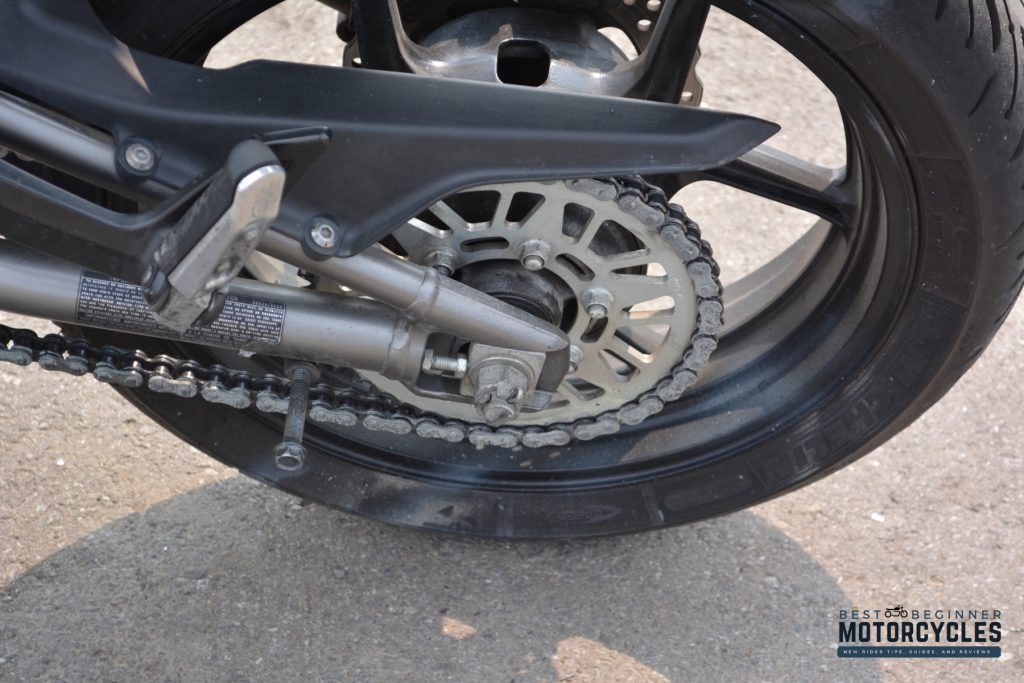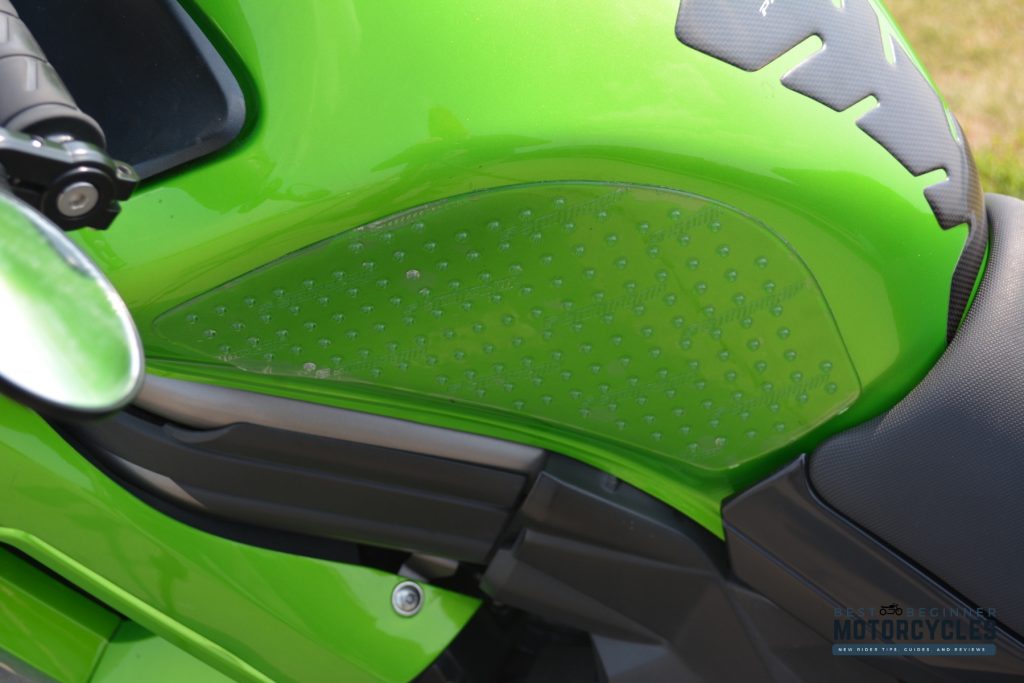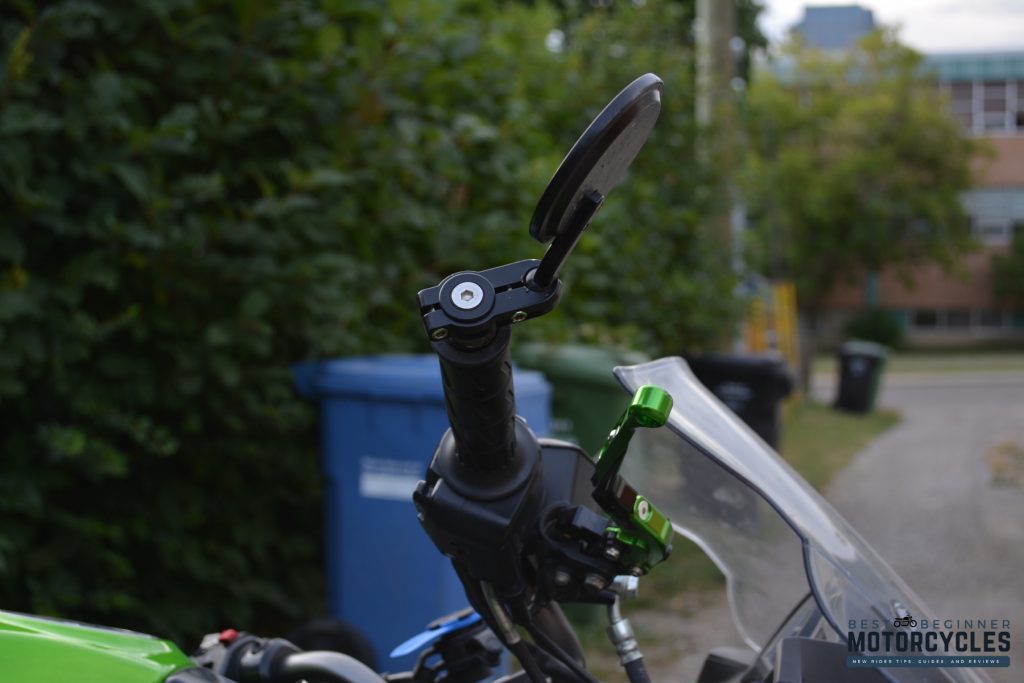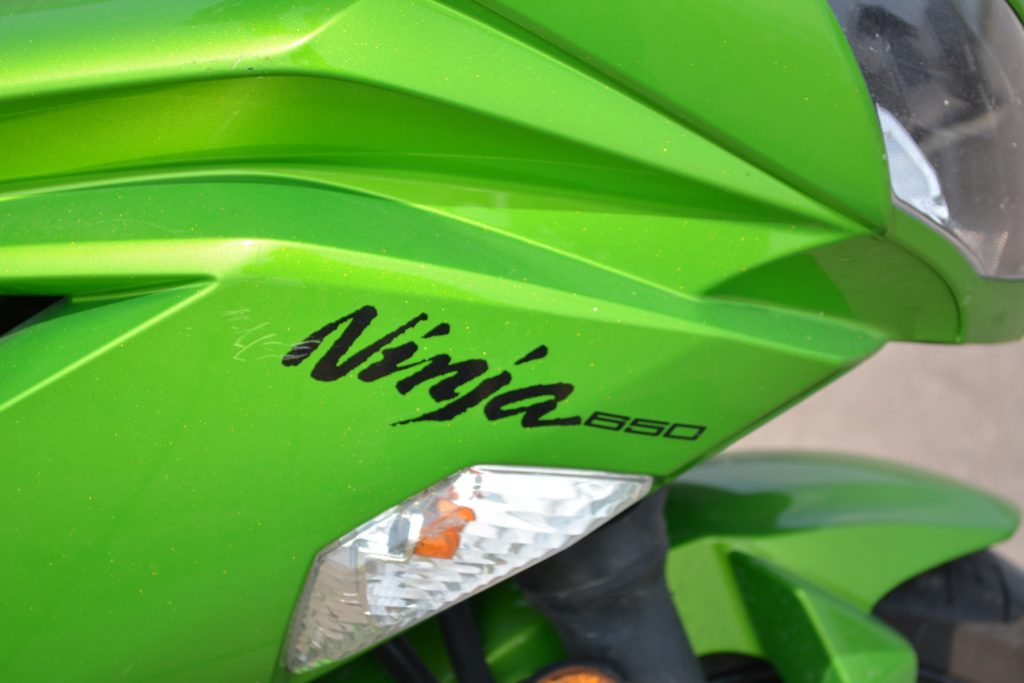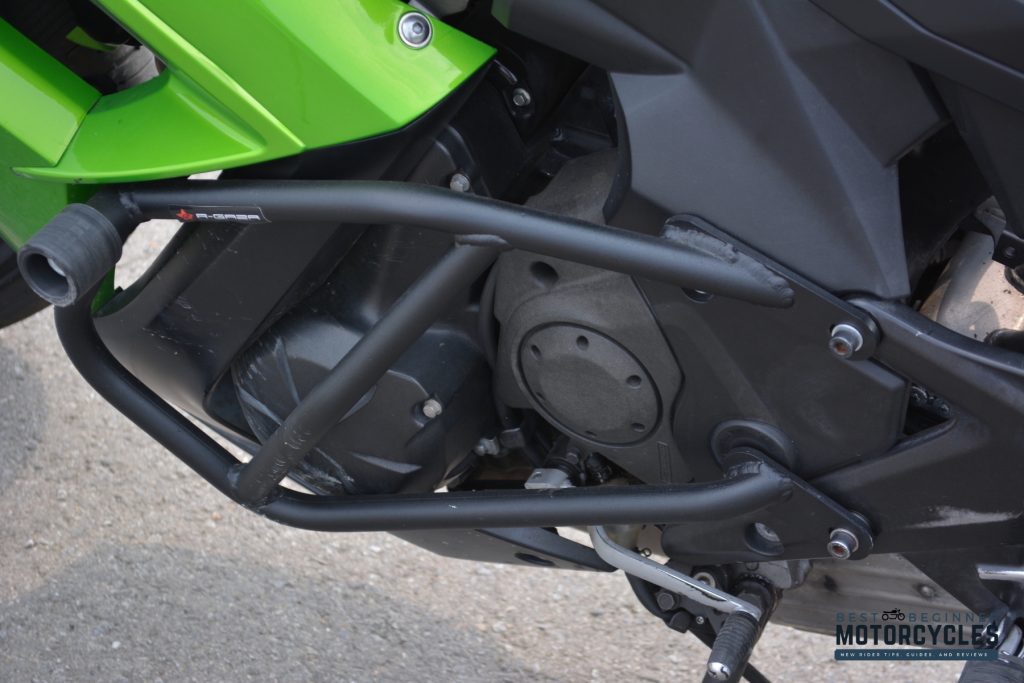The 2012 Kawasaki Ninja 650 features a 649cc parallel-twin engine, producing 71 HP and tickling at 50 lb-ft of torque. That engine is attached to a 6-speed transmission, and mates between the two with a multi-plate, cable-operated wet clutch. The same engine is in pretty much any Kawasaki that sports the 650 numberings, such as the Z650, the Versys 650, and the like.
Oriented very much towards the sport touring crowd instead of the pure sportbike crowd, the Ninja 650 is positioned to be a beginner bike for many or a second bike for those that already have a supersport or another bike in their garage and want a bit more of a relaxed ride. Able to devour the miles with aplomb, the middleweight Japanese bike needs to swing some good punches against its 650cc competitors, and for the most part, lands those punches.
Is It Worth Buying A Kawasaki Ninja 650?
If you’re new to riding, or looking for a beginner bike for the taller/heavier side of riders, the Ninja 650 is recommended in almost every beginner bike list for a reason. Extremely friendly power, a tall first gear with great clutch feel to get you rolling, strong dual front brakes and single rear brake, and a suspension setup that won’t rattle your teeth loose.
The bottom line is this: if you’re over 200 lbs, and have a 32 or longer inseam, you really cannot go wrong on a Ninja 650. In fact, in all my four months of ownership, the only truly difficult thing to get to for maintenance was the air filter, and that takes maybe 30 minutes and some good music in your earbuds to get to.
Reasons To Buy A Ninja 650:
- It makes enough power (71 HP) through a very forgiving, approachable powerband
- Extremely comfortable seat, almost “plush”
- Weighs in at under 500 lbs fully wet
- The standard riding position, slightly rear-mid pegs, for a comfortable yet sporty ride
- After a few rides to get used to it, it feels like a scalpel under your body
- It’s a sport-tourer, with emphasis on the sport bit. It loves to carve corners as much as it loves to eat up highway miles
- Excellent gas mileage. With varied riding, gets about 400 KM per 16L tank, or 4L/100KM. In American, that comes out as just over 50 MPG
- So prevalent that a good quality example with decent mileage and service history is available for under $4,000 USD in most states
Reasons To Not Buy A Ninja 650 (2012 version):
- You’re looking for an absolute track weapon. This is not a particularly aggressive bike, but it can corner and accelerate hard.
- No ABS. Models from 2014 to present have ABS
- The suspension is, to put it generously, soft. The bike will dive under heavy braking due to the long travel of the front forks. It is great for street and highway touring, but would not be adequate for track use.
- It has a 180-degree crank in the engine, meaning you do get quite a few vibrations through the frame. I personally find them reassuring and even nice but to each their own.
Production Run & Changes Over The Years
The 2012 Kawasaki Ninja 650 bears the official model name of ER-6f and is also known in many nations around the world as the 650R. This particular version of the Ninja 650 was produced between 2012 and 2015.
The previous two model variations, from 2006 to 2008, and from 2009 to 2011, were both known simply as the Ninja 650R.
The biggest change between the previous 650R and the ER-6f variation is that the engine compression was reduced from 11.3:1 to 10.8:1 to boost efficiency and allow for 87 octane gas to be used if absolutely necessary. The owner’s manual still recommends 89 octanes or better, but the change allowed for the ER-6f variation to be sold in more countries around the world that may not have access to the more potent jungle juice.
The bike was also extended by 0.5 inches to allow for a slightly more touring friendly rake on the front forks, and the height was raised by 0.4 inches to end up at 30.3 inches to fit an all-new lay-down rear shock with preload adjust, that traveled 5.2 inches compared to the 650R’s 4.9.
Other than that, the bike remained roughly the same. The only other major change was that in 2014, ABS was added as an option, and for the new Ninja 650 from 2016 onwards, it is included as standard.
Owner’s Review
As a new rider, I came into this hobby with a veritable smorgasbord of beginner bike choices. Did I want to go the adventure tourer route with something like a Suzuki VStrom 650? Did I want to ease into cruisers with a Honda Rebel 500 (even though I barely fit on one)? Did I want to start out with a full-on sportbike with a Yamaha YZF-R3? These are questions that are familiar to every rider, the biggest question that they ask themselves after earning their motorcycle endorsement and holding that oh-so-precious M (many parts of the USA), A2 (UK), or 6 (Canada) on their official license.
The truth of the matter is that the choices out there right now are so varied, so wide-ranging, so completely open, that almost every manufacturer has a designated beginner bike. Now, I might be a little biased on my opinion here, but after sitting on all models and makes of bikes, and taking account of the fact I am 6’1” tall and weigh anywhere between 260 to 280 lbs depending on how good a breakfast I had, Kawasaki bikes just seem to fit me like a glove.
That is the really important thing when you are looking for a new ride or, in my case, a fairly well-loved ride. If you hop on a bike and it just doesn’t feel right, it’s not the bike for you. I am at the fairly ancient age of 39, and I kind of like my spine to cooperate with me when I get off a motorcycle. After trying out an R3 at my motorcycle classes, I decided that touring/standard seating was for me.
I bought my 2012 Ninja 650 with 37,700 KM (23,476 miles) on the clock, and it had gone through the 32,000 KM (~20,000 miles) service the year before, including valve gapping, spark and ignition adjustments, ECU updates, the lot. It also had been fitted with Michelin Pilot Road 4 tires with only the initial scrub in period completed. It felt right during the test ride, and I shook hands on the sale the instant I got back to the seller’s house.
What I Personally Like:
- Perfect Height – For someone tall like me, with a short inseam (32), it is easy to flat-foot with my left as my right holds the rear brake
- Power – Maybe it’s my age showing a bit here, but I wanted a bike that wasn’t overly powerful but could still haul me out of a developing situation if I needed to crank the right wrist.
- Comfort & Fit – Again, I’m ancient. 39 years on this Earth, and I’ve been slowly falling apart since age 30 (those that know are slowly nodding their heads right now). When I get on the 650 and get rolling, my knees fit perfectly under the tank flares. My hands are comfortable and loose on the grips, my arms are limber and loose, and my feet are tucked back and up a little. The seat is also so plush for someone of my weight that I could ride, and have ridden, the bike all day.
What I Personally Don’t Like:
- The Windshield – The whole point of a windshield is to, well, shield you from the wind. On a motorcycle, it’s meant to flow the air up and over your head, with a little bit hitting the top intakes on your helmet. Maybe it’s because I’m tall, but even with the windshield at its most aggressive rake, if I crack my visor while riding, I get the airflow right into my face.
- Rearward Pegs – This is honestly a nitpick, but if the pegs were literally 2 inches forwards, it would be perfect. They are up and back a little, to promote the sporty nature of the sport tourer, and during a couple of pretty hard leans through corners, it makes sense to keep one’s feet clear of the pavement. But for a touring motorcycle, a bit too far back
The Ride
This is what it’s all about. You’ve donned your helmet and done up the strap. You’ve zipped up your jacket. Your gloves are on, tight and ready. You swing your leg over the saddle and lower yourself onto the bike. Since you started the bike a few minutes ago to let the oil warm up, you feel the reassuring thrum of that parallel-twin below you idling at 1,100 RPM.
The very first thing about the ER-6f version of the Ninja 650 is that the clutch is an absolute dream for a beginner. Being a cable-operated clutch, it transmits the bite point almost telepathically, and after only a couple of stalls on my first day of riding my bike, I have yet to stall it again moving off from a stop. You just know the clutch feel, and you dance the friction against adding throttle and away you go.
The clutch also has a moderate pull. It’s not super heavy, nor is it feather-light. The best adjective to describe it is “chunky.” I know that sounds a bit weird, yet once you give that clutch lever its first pull, you’ll understand. It’s not heavy, but it is solid. It’s not hard to pull, but it communicates a ton of information.
The engine has a soft rev-limiter at 10,300 RPM, and a hard one at 10,500 RPM, but I have honestly yet to hit those numbers. The bulk of the power is delivered between 3,000 RPM and 8,000 RPM, and is very predictable and linear, as is the tendency with parallel-twin engines. This is not to say that the engine won’t toss out some grunt when you need it, as it responds very well if you need to drop a gear and twist the wrist to get out of a situation. 71 HP and 49 lb-ft of torque might not sound like much, but when you drop a gear and pin it to get away from a car that is merging without shoulder checking, you really appreciate the fact the Ninja can get up and go.
As well, the ER-6f Ninja 650 is deceptively fast. You can get going so quickly in second gear that it gets you into “oh, look, jail time!” territory quite quickly should you be enthusiastic with your right wrist. It surprised me on one of my first days riding when I was cruising down one of the major roads in my part of Calgary. I noticed that despite being in the middle lane of three, I was passing cars on both sides. I glanced down at my speedometer, and what felt like the limit of 80 KPH (50 MPH) was actually 115 KPH (71 MPH).
Thankfully, the brakes are really good on the front, because with some gentle application and a very innocent little bit of whistling as I brought myself down to the limit, I was legal again within a few seconds. I haven’t had to fully and completely yank on the brakes in an emergency, but I have done some pretty hard deceleration when the light goes yellow just outside of the “I can make it” range.
Having dual front discs and good Tokico calipers hauls the bike down from speed very effectively, far more quickly than I originally was expecting from a sport-tourer. There is a noticeable dive when braking, and in an emergency braking situation, I could imagine the rear wheel lifting off the ground. Then again, it does share some components with the ZX-6R supersport of that generation, so that could very well be the reason the brakes are so strong, although it might benefit from having slightly stiffer front springs!
Yet, what I truly love about the Ninja 650, and something it is teaching me every ride, is just how well it corners. With the touring-soft suspension and touring-oriented aesthetic, the way that the bike will eagerly lean into a corner as you lean your upper body in as well is just sublime. With good quality tires at the right pressures, the rear suspension preloaded just so, and a little bit of throttle, the SLLR maneuver (Slow, Look, Lean, Roll) happens with the bike talking to you.
This is what it’s all about. Eyes to the exit of the corner and down the road, arms loose, body and bike in perfect harmony through a lean…
I know that sounds a bit like hyperbole, but it really does let you know what’s going on under both tires if you’re starting to push it a bit too far and keeps you honest. I started out my riding this season with cornering quite tentatively out there in “the real world.” The Ninja 650 let me know my mistakes without dumping me off in a low-side, and it will definitely respond if you have to input a touch of countersteering to tuck it into the corner tighter.
The Dynamics
Sound
This is definitely a personal opinion section. I actually like the sound of the parallel-twin chugging away, and the rumbling thumpathumpathumpa out of the exhaust. It’s not snarling and growling like a V-twin note, it’s more reminiscent of a dirt bike single’s style of sound. You can get aftermarket exhausts for the 650, and they do add certain dynamics to the sound, but personally, I like the rumble of the exhaust note through the stock exhaust over the wailing of an inline-four.
Throttle
The throttle is a cable-operated one, so when you twist the wrist, it is actually operating intake valves instead of telling a computer what to do. It does have a slack adjuster that lets you add anywhere from a couple of millimeters to just about 1.5 centimeters of slack if you wanted. I personally have mine at about 4 millimeters, as it closes the throttle completely as I reach for the brake lever, and if I need to make an emergency maneuver, it’s literally a twitch of my hand and I’m back on the throttle.
There is a noticeable, albeit brief, delay at any revs lower than 2,000 RPM, so you need to take that extra breath when moving off from a stop to allow the engine to actually suck in some air, mix it with fuel, and make little explosions happen. Once you’re above 2k, however, throttle response is as close to instant as any non-supersport I’ve ridden this year.
Chain
Using a standard O-ring sealed chain, the slack for it is actually quite loose in the owner’s manual. Some sportbikes like to have the chain have half an inch of slack, but the Ninja 650 allows for up to 1.3 inches of slack. The chain was adjusted before I bought the bike this year, and is sitting just about at 1 inch of slack, and I haven’t seen any issues with it tightening or loosening over the past few thousand kilometers of riding. As well, it seems to really like a lube that has protective wax as part of the formula, as it keeps dirt and grime away from the O-rings, despite making the chain look white.
Fuel Efficiency
A definite “your mileage may vary” area, but with reasonable throttle and not riding aggressively, I have managed an average of just about 400 KM to every full 16-liter tank, or 4L per 100KM. That near as makes no difference is 50 MPG from a 4.2 US gallon tank, giving you a couple of hundred miles of range before you have to worry.
Maintenance
Despite being a fully-faired motorcycle, the ER-6f Ninja 650 is remarkably easy to work on for simple maintenance tasks. Chain cleaning, lubrication, and inspection are very easy to perform, as a good half of the chain is exposed, and with a few screws, you can remove the chain guard if you want more access. The oil level window is very easy to see on the right-hand side of the bike, and the battery is tucked away under the main seat, with easy access to its terminals and tie-downs.
Oil changes are also not too difficult, albeit a bit more difficult than the Z650 brother of the Ninja 650. As there are fairings, and the oil drain plug is on the bottom of the engine, you do need to pull the fairing pin that holds the front of the two sides together. With that out, you can pull apart the fairings enough with just that to access the exhaust headers, the oil filter below them, and the oil drain on the bottom of the engine. Thankfully, the fill port is off to the right side of the engine, not under any fairings.
The only difficulty comes with two specific areas of yearly maintenance, that being the coolant access and the air filter access. To get to both, you do need some disassembly of the bike proper, as the coolant tank and airbox are underneath the fuel tank. To get to them, you remove the seat, the under-seat heat shield, the battery and battery tray, and the top of the airbox itself.
With the right tools and some good music in your earbuds, it will take you about 30 minutes to get down to both, so it’s best to do a full top to bottom maintenance routine if you plan on changing coolant. New air filter, new coolant, oil change, and new oil filter take a nice afternoon of work and gets you some wrenching experience as well, another important beginner skill.
The 2012 Kawasaki Ninja 650 In The Real World
Being a parallel-twin, the 2012 Kawasaki ER-6f Ninja 650R (the full name is long!) is not an out-and-out sportbike or even a supersport. It emerged from Kawasaki as a response to Suzuki’s best beginner bike, the SV650, and has a model to counter every one of Suzuki’s three types. The Z650 is the response to the SV650S, the ZX-6R is the response to the SV650X, and the Ninja 650 is the response to the SV650A. The reason I mention Suzuki at all is that they truly did kickstart the whole trend of having a beginner-friendly, sporty-but-really-touring motorcycle among the Big Four Japanese manufacturers.
The biggest thing is that riding a 180 crank parallel-twin motorcycle, you will be exposed to frame vibration, handlebar vibration, and sympathetic vibrations going through anything you attach to the bike, like cameras, smartphones, tail bags, etc. On that note, I have added a Kappa Alpha mini tail bag on the bike, which carries my handlebar lock, emergency trauma aid kit, a small bottle of visor spray, and a couple of microfiber cloths. It stays put with some good tight straps, but I wouldn’t want to carry eggs or whipping cream in it!
I also have added Stompgrips to the sides of my tank, mostly for comfort during long distance touring, as squeezing one’s knees in for hours on end does get a bit tiring. I can take a slightly more relaxed knee position and give my calves a rest with the Stompgrips as they let me maintain control with my knees for instant response, without needing to really crush the tank between my knees and thighs.
As my bike stands, I have made a couple of changes since I originally bought it. The standard mirrors were too narrow to see around a broad-shouldered rider like me, so I removed them and instead have bar-end mirrors that allow me to see a good 150-degree arc behind my bike across the pair.
The bike already came with the engine cage and sliders on, so I am not entirely sure which model and brand it is, but it has done its job admirably. I have tipped over once but was able to brace the bike going down so it only landed gently on the right-hand side slider. I did get a little battle scar on the name of the bike, however, but it just adds character!
However, I have also had a small object that I think was a bit of wood, I’m not sure, fall off a truck ahead of me and before I could dodge around it, it went under my front tire and got kicked up, smacking into the cage and spiraling away. No damage to the fairing, barely a scratch on the cage.
Since I bought the bike, I have put about 4,000 very enjoyable kilometers, or just about 2,500 miles, onto it. With maintaining the chain every second tank I fill up, giving it a spray down at the car wash after highway trips to get all the bugs off, and generally treating it nicely, my bike has been absolutely bulletproof. No hiccups, no false neutrals, no sudden clutch grabs. Just mile after mile of riding with a big smile plastered on my face under the helmet.
Kawasaki Ninja 650 Competition
As noted, the biggest competitor to the Ninja 650, of any year, is the Suzuki SV650. Both are designed to be extremely friendly tourers with sportbike DNA infused through them, and both do their jobs admirably.
There is also the Honda CBR650R, an inline-four competitor to the parallel-twin. The biggest difference between the two is that most of the CBR’s power is in the top half of the rev range, and you do need to get it up into those wailing RPMs to get it properly motivated. The parallel-twin has its grunt dead smack middle of the rev range, where you will actually be cruising most of the time, which gives it that extra punch when you need to downshift and twist the wrist to effect a pass or move out of trouble.
On the Yamaha side of things, the biggest threat to the Ninja 650 is the new 2022 R7, the parallel-twin replacement for the inline-four R6. Yamaha saw how the SV650 and Ninja/Z 650 models were doing and made a lightweight, track-ready version of both that can also perform as a sport-tourer. It will be interesting to ride an R7 in the future to compare it to the Kawasaki.

